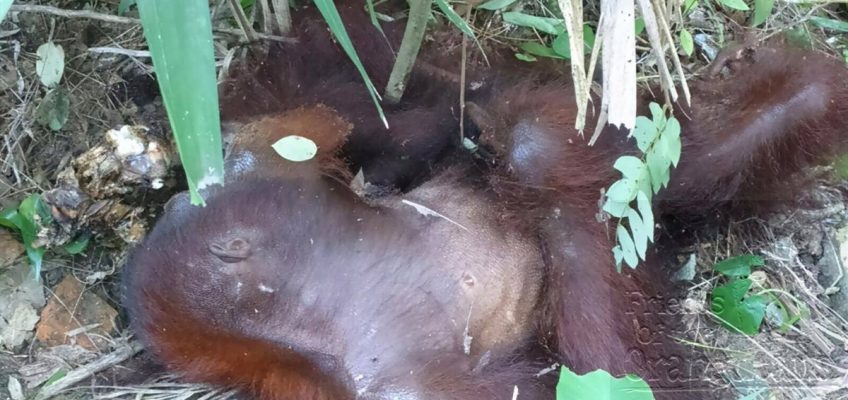A letter by the director of Friends of the Orangutans Malaysia was recently published by Free Malaysia Today, regarding the impact of massive, unsustainable & unethical orangutan tourism at the Sepilok Orangutan Rehabilitation Centre (SORC)
—-
Experts says ‘forests’ like the Sepilok Orangutan Rehabilitation Centre must be off limits to the public for purposes of tourism although this is something officials refuse to address.
By Upreshpal Singh
Many tourists flock to Malaysia every year to see our majestic flora and fauna. Sadly both are rapidly disappearing as a result of continued deforestation for oil palm plantations, and the ongoing wildlife trade. Unfortunately unethical and unsustainable wildlife tourism is also currently being carried out at a number of wildlife establishments in the country.
One such centre is the Sepilok Orangutan Rehabilitation Centre (SORC) near Sandakan, Sabah. For many years SORC has been a popular tourist destination in the state, attracting thousands of visitors annually from around the world who come to view Sabah’s iconic orangutans. However, unbeknownst to these tourists, these orangutan viewing practices come at a heavy price to the orangutans themselves.
SORC is called a ‘rehabilitation centre’ for orangutans, yet orangutan experts and all reputable rehabilitation centres agree that for successful rehabilitation, these centres must be off limits to the public for several reasons, one of which is to minimise disease risk and habituation to humans. Exposing endangered orangutans to thousands of tourists greatly increases their risk of contracting diseases such as tuberculosis and hepatitis and vice versa. Habituated and diseased orangutans cannot ever be released into the wild. Some may argue that the small Sepilok-Kabili forest is a final release site for orangutans but at only 4,300 hectares it is actually a reserve for semi-wild orangutans. Experts however are in total agreement that tourism should not be allowed in ‘forests’ where ex-rehabilitant orangutans roam freely and live.
Visitors are informed not to touch or hold orangutans at Sepilok. But can we expect tourists who have flown in from various parts of the world to reject the opportunity of coming into contact with an orangutan? And in most cases, it’s the apes who approach visitors and the former might turn aggressive towards visitors if it is fended off. This is one of the reasons great ape rehabilitation centres must be off limits to the public.
As a direct consequence of the massive tourism at SORC, there are now many habituated orangutans who will never be viable candidates for true release completely back to the wild into Tabin Wildlife Reserve in eastern Sabah. Disturbingly, visitor reports and photos and our investigations have shown that Sepilok’s orangutans regularly get far too close to and even have direct contact with visitors at SORC. Alarmingly these habituated apes can also be seen outside the rehabilitation centre, in nearby hotels and at the Bornean Sun Bear Conservation Centre (BSBCC). We were informed that a couple of orangutans used to smash equipment at a hotel outside SORC if they were not fed when they showed up. It all seems chaotic at SORC, doesn’t it?
It is therefore not surprising to know that in January this year, a habituated orangutan named ‘Yoda’ was tragically electrocuted to death just outside the centre whilst on his way to a hotel which he was known to visit. Friends of the Orangutans Malaysia (Foto) have in the past written to the Sabah Wildlife Department (SWD) about the risks to habituated orangutans and visitors regarding tourism practices at Sepilok, but to no avail. All our emails to SWD to know its mitigation plans following Yoda’s death have gone unanswered.
Foto has also received disturbing reports of orangutans harassing and ‘mugging’ visitors to the SORC. We have been informed that a handful of habituated orangutans have gone missing from SORC as a result of their continued harassment of visitors. Late last year Foto asked the SWD of the whereabouts of one orangutan called ‘Toby’ who has reported as gone ‘missing’ from SORC. SWD never addressed our question. Has something terrible happened to Toby and others? We have been informed of other nightmarish stories coming out of SORC.
Ethical and sustainable orangutan tourism can be achieved and at the benefit of Sabahans and the state. Through social media and word-of-mouth tourists are becoming much more aware of the detrimental effect of tourism practices at SORC for the orangutan and will start to boycott the centre unless urgent action is taken to halt tourism there.
Upreshpal Singh is Director of Friends of the Orangutans (Malaysia).





